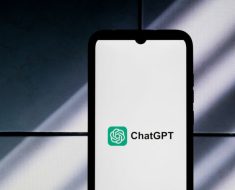
If you’re looking to take your blog storytelling to the next level, you’re in the right place.
In this post, I’m going to show you how ChatGPT, the amazing language model developed by OpenAI, can be a game-changer for enhancing your blog’s storytelling capabilities.
Whether you’re a seasoned blogger or just starting out, these 8 ways will help you craft engaging and captivating stories that will keep your readers coming back for more.
What is ChatGPT?
Before we dive into the ways ChatGPT can improve your storytelling, let’s quickly introduce ChatGPT for those who might not be familiar.
ChatGPT is a state-of-the-art language model that can generate human-like text and hold meaningful conversations.
It’s trained on a massive amount of text data and is designed to understand and generate natural language.
So, how can it benefit your blog storytelling?
Let’s find out!
1. Generating Attention Grabbing Introductions
The first impression matters, and that holds true for your blog posts as well. ChatGPT can help you create attention-grabbing introductions that instantly hook your readers.
By typing a brief description of your topic or the main point you want to convey, ChatGPT can generate creative and compelling opening paragraphs that pique curiosity and encourage readers to keep scrolling.
For example, if you’re writing a blog post about travel, you can ask ChatGPT to generate an introduction like this:
Input: “Write an engaging introduction for a blog post about the top travel destinations in 2023.
Output: “Pack your bags and get ready for an unforgettable journey! In this blog post, we’re going to explore the hottest travel destinations that should be on your radar for 2023.”
With ChatGPT’s help, you can make sure your blog post starts with a bang!
2. Crafting Captivating Stories
Storytelling is all about creating a connection with your audience, and ChatGPT can assist you in crafting engaging narratives.
Whether you’re writing a personal anecdote, a customer success story, or a fictional tale, ChatGPT can provide you with ideas, plot twists, and character development suggestions.
Simply type in a brief outline of your story, and ChatGPT can offer creative inputs to make your narrative more compelling.
Let’s dive deeper into how ChatGPT can assist you in creating engaging and compelling narratives:
a. Developing Plot Ideas:
One of the key challenges in storytelling is coming up with unique and interesting plot ideas. Whether you’re writing fiction, personal anecdotes, or case studies, ChatGPT can help you brainstorm plot ideas. You can give ChatGPT a basic concept or theme, and it can suggest plot twists, conflicts, and resolutions to make your story more engaging.
Cool, right?
For example, if you’re writing a blog post about a travel adventure, you can ask ChatGPT to provide ideas for unexpected challenges or exciting discoveries during the journey.
b. Character Development:
Well-developed characters are the heart of any great story. ChatGPT can assist you in creating and fleshing out characters for your narratives. You can describe the characteristics, backgrounds, and motivations of your characters, and ChatGPT can provide suggestions for adding depth and complexity to them.
Whether you’re writing a short story, a character-driven blog post, or even a product review with personas, ChatGPT can help you make your characters relatable and memorable.
c. Creating Suspense and Tension:
Maintaining suspense and tension is crucial to keeping your readers engaged. ChatGPT can provide suggestions on how to build anticipation and create dramatic moments in your story.
Whether you’re writing a thriller, a mystery, or a blog post about a challenging situation you’ve faced, ChatGPT can offer ideas for cliffhangers, plot twists, and the timing of revelations to keep your readers on the edge of their seats.
d. Crafting Endings That Leave an Impact:
A satisfying conclusion is essential for a captivating story. ChatGPT can help you brainstorm powerful endings that resonate with your readers. You can describe the actual emotions or messages you want to convey in the ending, and ChatGPT can offer suggestions for how to wrap up your story in a memorable and impactful way.
Whether it’s a blog post with a call to action or a short story with a thought-provoking ending, ChatGPT can assist you in creating a lasting impression.
e. Improving Story Flow:
Ensuring a smooth and coherent flow in your storytelling is vital. ChatGPT can offer guidance on how to structure your narrative effectively. It can suggest where to place key plot points, character developments, and dialogues to maintain a cohesive storyline.
This helps your readers follow the story effortlessly, making for a more engaging reading experience.
f. Overcoming Writer’s Block:
Writer’s block can be a significant roadblock when crafting stories. ChatGPT can serve as a source of inspiration when you’re stuck. You can describe your creative block or the point in your story where you’re unsure how to proceed, and ChatGPT can provide suggestions and ideas to help you overcome the block and continue writing.
g. Adapting to Different Genres:
Whether you write fiction, non-fiction, or a mix of both, ChatGPT can adapt to various genres and styles. You can specify the genre you’re working in, and ChatGPT can provide recommendations and insights tailored to that genre.
This versatility makes ChatGPT a valuable tool for bloggers who explore different storytelling approaches in their content.
ChatGPT is a versatile assistant that can play a significant role in crafting captivating stories for your blog.
Whether you need help generating plot ideas, developing characters, creating suspense, crafting impactful endings, improving story flow, overcoming writer’s block, or adapting to different genres, ChatGPT is there to support your creative storytelling process.
By collaborating with ChatGPT, you can elevate your blog’s storytelling and keep your readers eagerly turning the virtual pages of your content.
3. Finding Relevant Examples and References
Backing up your blog posts with real-world examples and references can make your content more credible and informative. ChatGPT can assist you in finding relevant examples and references by suggesting sources, statistics, and data points.
Whether you’re writing about the benefits of a particular product or the latest industry trends, ChatGPT can help you gather the necessary information to make your blog post more informative and trustworthy.
4. Improving Descriptive Language
Good storytelling often relies on descriptive language that paints vivid pictures in the reader’s mind. ChatGPT can help you enhance your descriptive writing by suggesting synonyms, adjectives, and metaphors. You can simply type in a sentence or a paragraph, and ChatGPT can offer alternatives and improvements to make your descriptions more vivid and engaging.
Here’s how ChatGPT can assist you in enhancing your descriptive language:
a. Synonym Suggestions:
One way ChatGPT can help you improve your descriptive language is by providing synonym suggestions. If you’ve used a word repetitively or want to find a more vivid and precise synonym for a particular word, you can simply ask ChatGPT for suggestions. For instance, if you’ve described a character as “happy,” ChatGPT can offer alternatives like “ecstatic,” “joyful,” or “elated” to make your description more nuanced and engaging.
b. Adjective and Adverb Recommendations:
Adding descriptive adjectives and adverbs can enrich your writing by providing more details and depth. ChatGPT can suggest appropriate adjectives and adverbs to enhance your descriptions. Whether you’re describing a landscape, a character’s appearance, or the mood of a scene, ChatGPT can help you choose the right words to create a more vivid picture in your readers’ minds.
c. Metaphor and Simile Ideas:
Metaphors and similes are powerful tools for creating visual and emotional connections in your storytelling. If you want to use metaphors or similes but are struggling to come up with creative ones, ChatGPT can provide suggestions. Describe what you want to compare or convey, and ChatGPT can offer metaphorical or simile-based phrases to make your descriptions more evocative. For example, if you’re describing a fast-paced race, ChatGPT can suggest metaphors like “they sprinted like cheetahs” or “as fast as lightning.”
d. Creating Sensory Experiences:
Immersing readers in sensory experiences is a hallmark of excellent descriptive writing. ChatGPT can help you incorporate sensory details into your storytelling by suggesting ways to engage the five senses—sight, sound, smell, taste, and touch. Whether you’re describing a delicious meal, a serene natural setting, or a thrilling action sequence, ChatGPT can recommend sensory elements that make your writing more immersive and engaging.
e. Balancing Descriptive and Concise Writing:
Finding the right balance between descriptive writing and concise storytelling is essential. ChatGPT can provide guidance on when to be more descriptive and when to be concise based on the context of your story. This ensures that your descriptions enhance the reader’s experience without overwhelming them with unnecessary details.
f. Maintaining Consistency:
Consistency in descriptive language is essential to keep your readers engaged. ChatGPT can help you maintain consistency in your descriptions throughout your story. By suggesting recurring motifs, themes, or visual imagery, ChatGPT ensures that your descriptive language aligns with the overall tone and atmosphere of your narrative.
g. Evoking Emotions:
Descriptive language can also be a powerful tool for evoking emotions in your readers. If you want to convey a specific emotional tone or atmosphere in your storytelling, ChatGPT can provide recommendations on how to use descriptive language effectively to achieve that goal. Whether you’re aiming for nostalgia, suspense, joy, or melancholy, ChatGPT can assist in selecting words and phrases that resonate emotionally with your audience.
ChatGPT is an excellent resource for improving your descriptive language in storytelling.
Whether you need synonym suggestions, adjective and adverb recommendations, metaphor and simile ideas, sensory experiences, help with balancing conciseness, ensuring consistency, or evoking emotions, ChatGPT can be your creative partner in making your writing more vivid, engaging, and memorable.
By utilizing the power of descriptive language, you can transport your readers into the worlds you create and leave a lasting impression.
5. Generating Compelling Dialogue
Dialogue can bring your characters and stories to life, but crafting realistic and engaging conversations can be challenging. ChatGPT can assist you in generating authentic dialogue for your blog posts.
Whether you’re writing a dialogue-heavy scene in a story or including customer testimonials in a product review, ChatGPT can help you create compelling conversations that resonate with your readers.
Here’s how ChatGPT can assist you in generating engaging and realistic dialogue for your blog posts:
a. Character Conversations:
If you’re writing a story or a blog post that includes character interactions, ChatGPT can help you craft authentic dialogue. You can give details about your characters, their personalities, and the context of the conversation, and ChatGPT can generate realistic lines of dialogue for your characters. This ensures that the dialogue remains consistent with the characters’ traits and motivations, making the interactions more engaging and believable.
b. Customer Testimonials and Reviews:
Incorporating customer testimonials and reviews into your blog posts can add credibility and authenticity to your content, especially if you’re promoting products or services. ChatGPT can assist you in creating compelling customer dialogues that highlight their experiences and opinions.
By giving ChatGPT the necessary information, like the product or service in question and the type of feedback you want to showcase, it can generate convincing dialogues that resonate with your readers.
c. Interview Transcripts:
If your blog involves conducting interviews with experts, influencers, or industry professionals, ChatGPT can help transcribe and refine interview dialogues. It can assist in cleaning up the interview text, removing filler words, and organizing the conversation into a coherent and engaging format for your blog post. This ensures that the insights and expertise shared in the interview are presented effectively to your audience.
d. Role-Playing Scenarios:
If you’re writing content that involves role-playing scenarios or hypothetical dialogues, ChatGPT can generate dialogues for these situations. You can describe the scenario, the characters involved, and the desired outcomes, and ChatGPT can produce dialogue that fits the context. Whether it’s a negotiation, a conflict resolution, or a customer support interaction, ChatGPT can help you create engaging and instructive dialogues.
e. Conversational Tone:
Maintaining a natural and conversational tone in your blog posts is essential for reader engagement. ChatGPT can suggest ways to infuse a conversational feel into your dialogues. It can also give recommendations on sentence structure, word choice, and phrasing to ensure that the dialogue flows smoothly and feels authentic.
f. Language Variety and Diction:
Different characters or interviewees may have unique speaking styles, vocabularies, and tones. ChatGPT can help you capture these distinctions by offering suggestions for language variety and diction.
Whether you’re writing dialogue for a quirky character, a formal expert, or a casual conversation, ChatGPT can assist in tailoring the language to suit the individual or context.
g. Overcoming Writer’s Block in Dialogue:
Writer’s block can be particularly challenging when it comes to crafting dialogue. ChatGPT can provide a starting point or prompt to kickstart your dialogue-writing process. You can describe the scene or context and ask ChatGPT to generate an initial line of dialogue, which can serve as a springboard for your creative writing.
ChatGPT is a versatile tool for generating compelling dialogue that enhances your storytelling.
Whether you’re writing character interactions, customer testimonials, interview transcripts, role-playing scenarios, or simply need assistance in maintaining a conversational tone, ChatGPT can provide valuable support.
By using ChatGPT to create engaging and realistic dialogue, you can make your blog posts more interactive, relatable, and immersive for your readers, ultimately enhancing their overall experience.
6. Optimizing Blog Post Structure
The structure of your blog post plays a crucial role in storytelling. ChatGPT can provide guidance on how to organize your content for maximum impact. It can suggest headings, subheadings, and the order of information to create a logical and engaging flow. This ensures that your readers can easily follow your story and stay engaged from start to finish.
7. Brainstorming Ideas and Topics
Writer’s block can be a real buzzkill when you’re trying to create compelling blog content. ChatGPT can be your brainstorming buddy. Share your niche or industry, and ChatGPT can generate a list of blog post ideas and potential topics. It can also provide you with insights and trends within your field to help you stay ahead of the curve in your storytelling.
8. Polishing and Editing Assistance
After you’ve written your blog post, it’s essential to polish it for grammar, spelling, and style. ChatGPT can serve as your virtual editor, offering suggestions for improvements and corrections. It can also provide guidance on sentence structure and word choice to ensure that your blog post is not only engaging but also error-free.
Conclusion
Including ChatGPT in your blog writing process can be a game-changer for improving your storytelling.
From creating attention-grabbing introductions to generating compelling dialogue and even assisting with editing, ChatGPT can enhance every aspect of your blog posts.
However, we have to remember that while ChatGPT is a valuable tool, it’s essential to use it as an aid rather than a replacement for your creativity and unique voice.
So, why wait?
Start using ChatGPT today to take your blog storytelling to new heights.
Your readers will thank you for the engaging and captivating content you deliver, and you’ll find yourself enjoying the writing process even more.
Happy blogging!
********
Note: While ChatGPT is a powerful tool for enhancing your blog’s storytelling, always remember to review and edit the content it generates to ensure it aligns with your brand’s voice and style.





